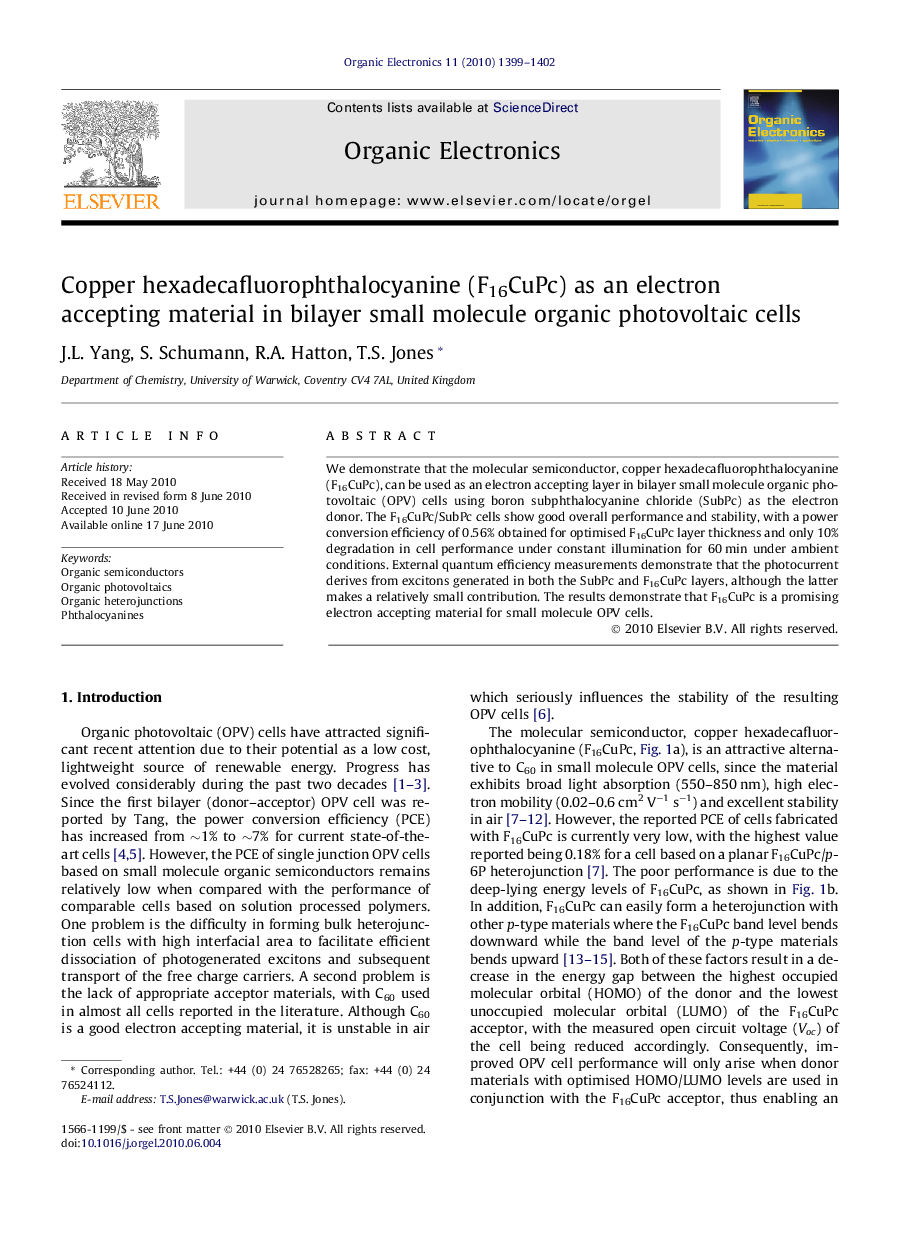| Article ID | Journal | Published Year | Pages | File Type |
|---|---|---|---|---|
| 1264117 | Organic Electronics | 2010 | 4 Pages |
We demonstrate that the molecular semiconductor, copper hexadecafluorophthalocyanine (F16CuPc), can be used as an electron accepting layer in bilayer small molecule organic photovoltaic (OPV) cells using boron subphthalocyanine chloride (SubPc) as the electron donor. The F16CuPc/SubPc cells show good overall performance and stability, with a power conversion efficiency of 0.56% obtained for optimised F16CuPc layer thickness and only 10% degradation in cell performance under constant illumination for 60 min under ambient conditions. External quantum efficiency measurements demonstrate that the photocurrent derives from excitons generated in both the SubPc and F16CuPc layers, although the latter makes a relatively small contribution. The results demonstrate that F16CuPc is a promising electron accepting material for small molecule OPV cells.
